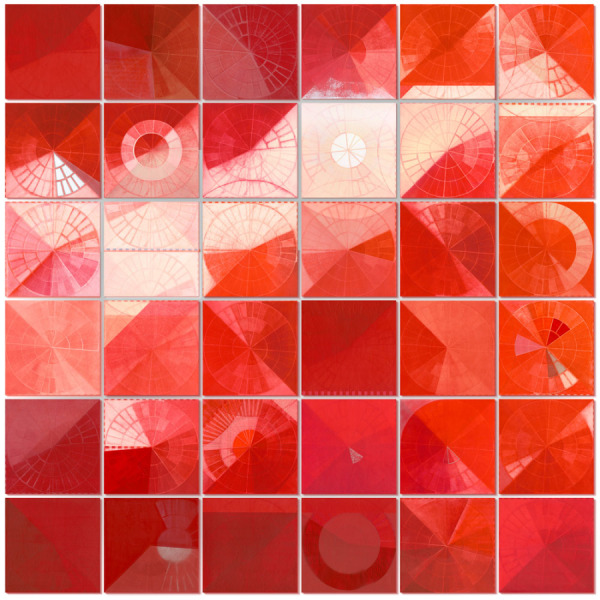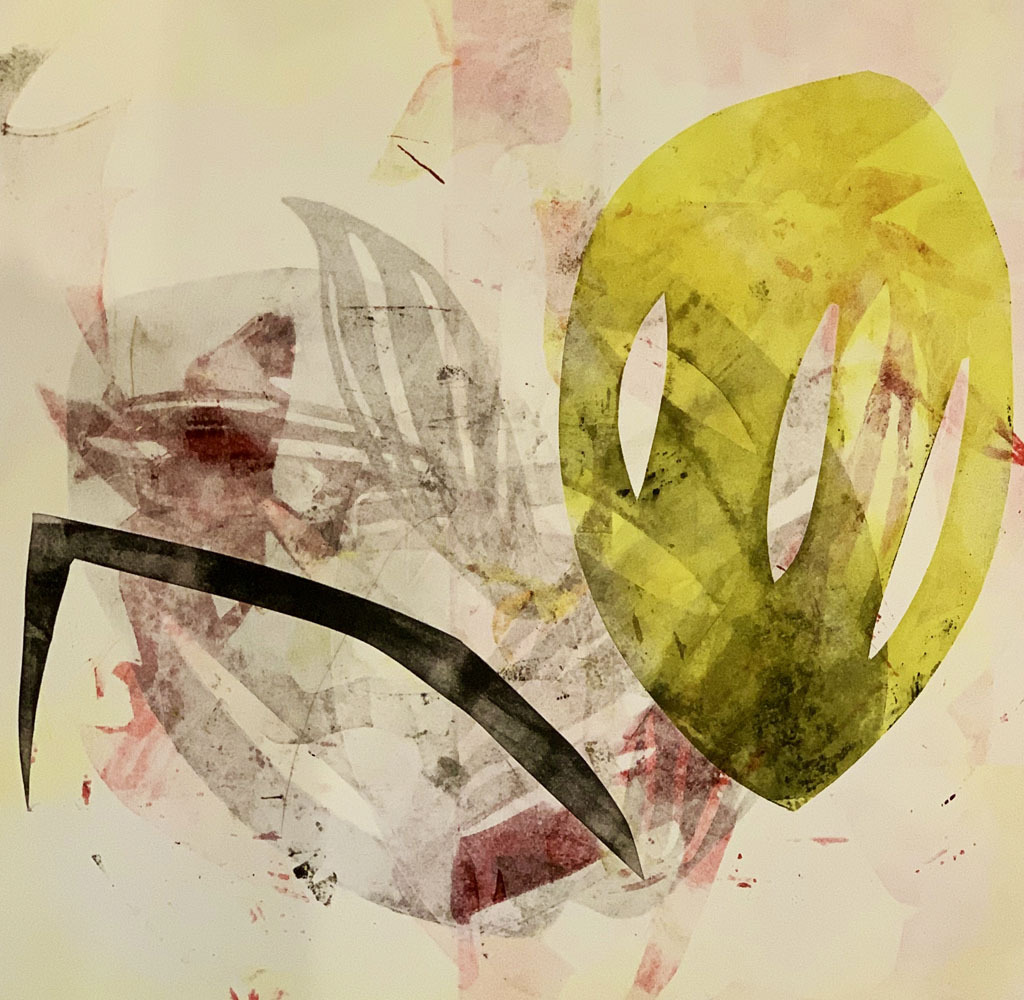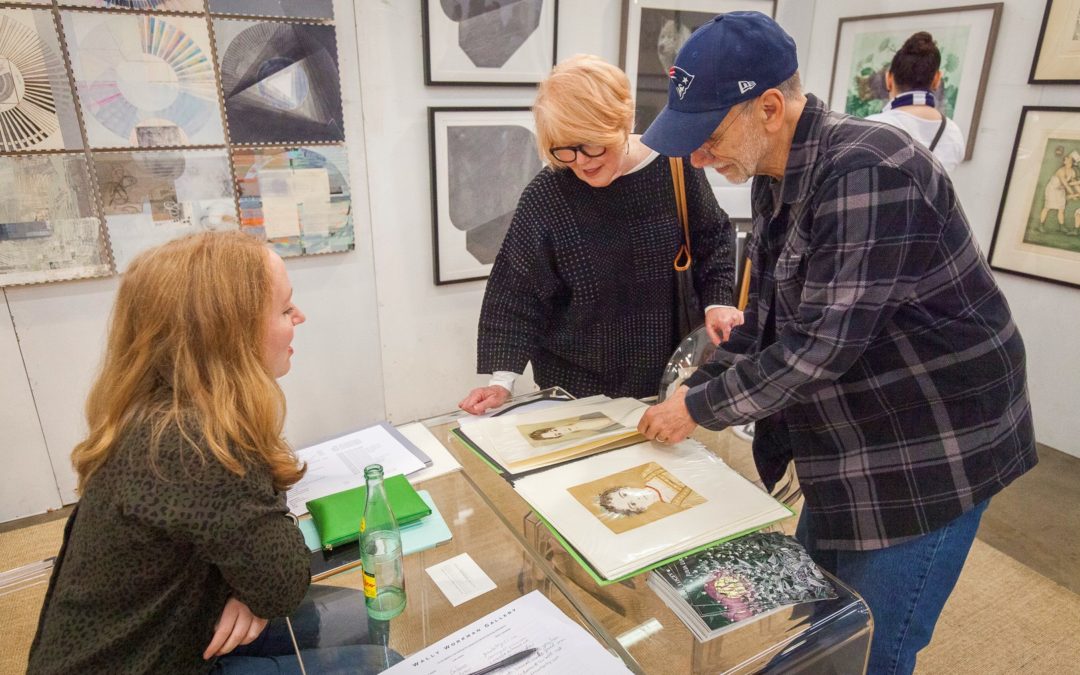Wally Workman Gallery at PrintEXPO 2019. Photo by Scott David Gordon.
There are so many ways to approach collecting art. It is as varied as the art itself. But printmaking provides many opportunities that don’t exist in other mediums. Most printmakers choose the medium because they enjoy the extensive process required and the opportunity to play with repetition and variation. Printmaker Elvia Perrin says “I make prints because the process allows me time to engage and interact with material and navigate ideas through making. There is a push and pull with making prints that allows concepts to be challenged, evolve and to be fully explored.” Perrin reuses the plates from her monoprints to create a series that tells a visual story and can easily be collected as a set. Being able to keep the whole “story” together is highly desirable not only to collectors but to the artists as well. It is true that many painters work in series, however collecting a series of paintings is typically exponentially more expensive than collecting a series of prints. The multiplicity of printmaking allows sets to be more accessible and therefore easier to keep together in one collection than most other mediums.

Elvia Perrin, Blanks V, 2016, Intaglio 1/1, 26″ x 20″
Something many artists will tell you is that printmaking creates community. As presses are quite expensive, most printmakers work in a shared space and utilize the equipment together. They share techniques and ideas. What many people don’t think about is how it also creates a community of collectors. “While my primary love of prints is esthetic and love of the printmaking process is allegorical, one beautiful product of printmaking’s repeatability is its shareability. Every shared proof is a new connection and every dispersed edition creates a community of impressions,” says artist Ellen Heck. It is wonderful that a group of people from around the world can share the love of owning a certain print, each slightly varied from the next. While so many art forms exist fully in only one place at a time, the print can exist and create community outside of those constraints.

Ellen Heck, Long Wave, 2017, 36 etchings pulled from the same plate, watercolor, ink, spray paint, and acrylic mounted on panels, 75″ x 75″
Additionally, collectors who value experimentation are often drawn to printmaking as the artist’s processes and exploration is visible in each edition. As artist Revi Meicler says, “Each new print carries the marks left from the previous print so it is an experimental activity. There is no way to really predict what will happen once the print is pulled off the painted surface. There is no way to completely cover up the marks left behind. Those marks will affect subsequent prints so, where painting can be a reductive process, the (print) is always an additive experimental process which requires deliberate mark making, inventiveness and courage.” It is this spirit that collectors admire and sense when owning an original print.

Revi Meichler, Spring in Winter I, 2019, Monotype, 16″ x 16″
Community, experimentation and value are just a few of the reasons collectors are drawn to printmaking. It is not only an affordable way to enter the art market but one that is also connected to hundreds of years of tradition—this tie to the past appeals to many. Seeing what artists can do today with equipment that was quite similar in the 1400s is astounding. In this way, printmakers are able to have a unique conversation with art history through the materials used and not just through the subject matter they choose. It is a centuries long practice that is, in short, a cornucopia for collectors and artists alike.
Rachel Stephens is a partner at Wally Workman Gallery in Austin, which specializes in emerging and collected talent. Be sure to catch Printmakers: In Good Company, on view at Wally Workman Gallery from January 9 through 30, 2021, presented in conjunction with PrintAustin 2021.
Artwork images courtesy of Wally Workman Gallery.






























